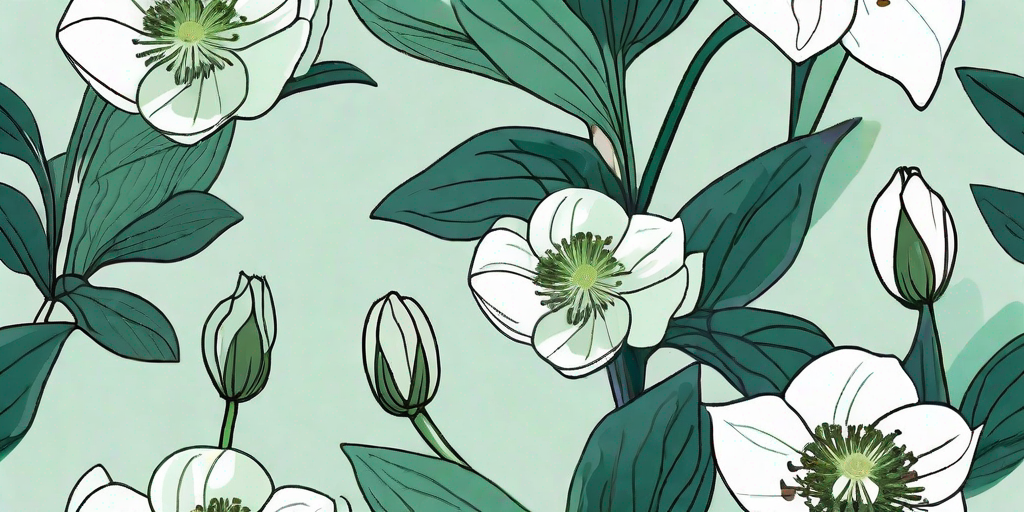
Welcome, green-thumbed enthusiasts and budding botanists! If you're looking to add a dash of elegance to your garden, you've come to the right place. Today, we're going to explore the world of Hellebores, also known as the Christmas or Lenten rose. But don't let the name fool you, these beauties are not related to roses. They are, however, a sight to behold and a joy to grow. So, let's dive in, shall we?
Understanding Hellebores
Before we get our hands dirty, it's essential to understand what we're dealing with. Hellebores are perennials, meaning they'll grace your garden with their presence year after year. They're known for their early bloom time, often poking their heads out in late winter or early spring when most plants are still snoozing.
These plants are not just early risers; they're also quite the survivors. They can withstand cold temperatures, poor soil conditions, and even the shade. Talk about hardy! But, as tough as they are, they're also incredibly beautiful, boasting a variety of colors from white and pink to deep purple and even speckled varieties.
The Anatomy of a Hellebore
Now, let's get up close and personal with our plant. Hellebores have a unique structure, with five petal-like sepals surrounding a ring of nectaries (tiny cup-shaped structures) and stamens. The actual petals are modified into nectaries, which is why they look so different from your typical flower.
These plants also produce a large number of seeds, which are held in a capsule-like structure. Once the seeds are ripe, the capsule splits open, releasing the seeds into the wild (or your garden). This is where our journey begins.
How to Grow Hellebore Seeds
Alright, enough chit-chat. Let's get down to business. Growing Hellebores from seeds can be a bit of a challenge, but with a little patience and a lot of love, you'll be rewarded with a garden full of blooming beauties. Here's how to do it:
Step 1: Collecting the Seeds
The first step in our journey is to collect the seeds. You'll want to do this in late spring or early summer when the seed capsules are ripe. Be careful not to wait too long, or the seeds will be carried off by the wind (or your nosy neighbor's cat).
Once you've collected your seeds, it's time to prepare them for planting. Hellebore seeds need to be fresh to germinate, so don't dilly-dally. Get those babies in the ground!
Step 2: Planting the Seeds
When it comes to planting, Hellebores aren't too picky. They'll tolerate a variety of soil types, as long as it's well-draining. So, find a nice spot in your garden, preferably in the shade, and get to work.
Plant the seeds about 1 inch deep and cover them with a thin layer of soil. Then, give them a good drink of water. Not too much, though. We don't want to drown the poor things.
Step 3: Waiting for Germination
Now comes the hard part: waiting. Hellebore seeds can take anywhere from 6 weeks to 2 years to germinate. Yes, you read that right. Two years. But don't worry, your patience will be rewarded. In the meantime, keep the soil moist and watch for any signs of life.
Caring for Your Hellebores
Once your Hellebores have sprouted, the real fun begins. These plants are relatively low-maintenance, but they do require some care to thrive.
Watering
Hellebores prefer moist soil, but they don't like to sit in water. So, make sure to water them regularly, but avoid overwatering. A good rule of thumb is to water when the top inch of soil is dry.
Feeding
Like all plants, Hellebores need nutrients to grow. A slow-release fertilizer applied in the spring should do the trick. Just be sure to follow the package instructions to avoid over-fertilizing.
Pruning
Pruning isn't necessary for Hellebores, but it can help keep your plants looking their best. Remove any dead or damaged leaves in the spring to make way for new growth.
FAQs
Now, let's tackle some of the most common questions about growing Hellebores.
Can I grow Hellebores in pots?
Absolutely! Hellebores make excellent container plants. Just make sure to use a well-draining potting mix and a pot with drainage holes.
Do Hellebores attract pests?
While Hellebores are generally pest-resistant, they can sometimes attract aphids. If you notice these tiny pests on your plants, you can remove them with a blast of water or a mild insecticidal soap.
Are Hellebores poisonous?
Yes, all parts of the Hellebore plant are poisonous if ingested. So, keep them out of reach of children and pets.
Conclusion
And there you have it, folks! A comprehensive guide to growing Hellebore seeds. Sure, it might take a bit of patience and a lot of love, but the reward is well worth the wait. So, why not give it a try? Your garden will thank you.















